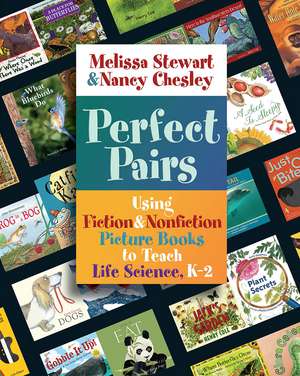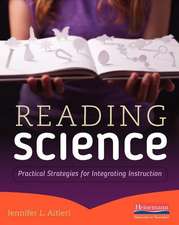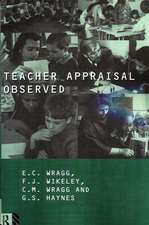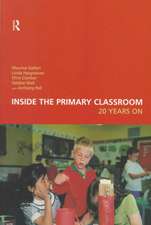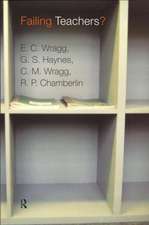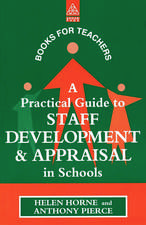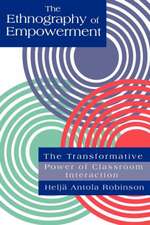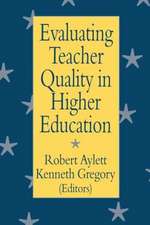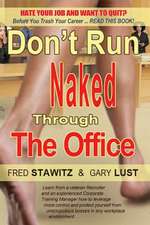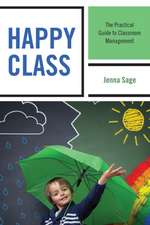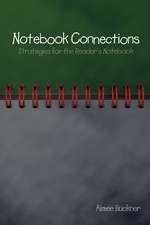Perfect Pairs, K-2: Using Fiction & Nonfiction Picture Books to Teach Life Science, K-2
Autor Melissa Stewart, Nancy Chesleyen Limba Engleză Paperback – 12 aug 2014
Preț: 326.08 lei
Nou
Puncte Express: 489
Preț estimativ în valută:
62.39€ • 65.14$ • 51.64£
62.39€ • 65.14$ • 51.64£
Carte tipărită la comandă
Livrare economică 05-19 aprilie
Preluare comenzi: 021 569.72.76
Specificații
ISBN-13: 9781571109583
ISBN-10: 1571109587
Pagini: 360
Dimensiuni: 203 x 254 x 20 mm
Greutate: 0.84 kg
Ediția:1
Editura: Taylor & Francis
Colecția Routledge
Locul publicării:Oxford, United Kingdom
ISBN-10: 1571109587
Pagini: 360
Dimensiuni: 203 x 254 x 20 mm
Greutate: 0.84 kg
Ediția:1
Editura: Taylor & Francis
Colecția Routledge
Locul publicării:Oxford, United Kingdom
Public țintă
Professional Practice & DevelopmentRecenzii
"I have seen what may be the MOST useful and beautiful professional use title in all my livelong days. There are sample questions and worksheets and pretty much anything a K-2 teacher would need. It is also lovely on the old eyeballs and clearly well researched. I love it. You need it. No one has heard of it. Go get it." - School Library Journal blog
"Perfect Pairs provides teachers with meaningful ways to use literature and inquiry to engage students in life science concepts" - The Nonfiction Detectives blog
"Perfect Pairs provides teachers with meaningful ways to use literature and inquiry to engage students in life science concepts" - The Nonfiction Detectives blog
Notă biografică
Melissa Stewart is an award-winning author of more than 150 science-themed nonfiction books for children and the coauthor of Perfect Pairs: Using Fiction & Nonfiction Picture Books to Teach Life Science, K–2. She also maintains the blog Celebrate Science (http://celebratescience.blogspot.com) and offers school visits and teacher inservice programs that focus on nonfiction writing, using children’s books to address curriculum standards, and creative ways to integrate science and language arts instruction. Her website is www.melissa-stewart.com.
Nancy Chesley was an elementary teacher for twenty-six years and a K–5 science and literacy specialist for six years. She won the Presidential Award for Excellence in Elementary Science Teaching in 2001 and the Milken Foundation National Distinguished Educator Award in 2002. She received a BA in elementary education and an MSEd in literacy education from the University of Southern Maine. Nancy is the coauthor of Perfect Pairs: Using Fiction & Nonfiction Picture Books to Teach Life Science, K–2.
Nancy Chesley was an elementary teacher for twenty-six years and a K–5 science and literacy specialist for six years. She won the Presidential Award for Excellence in Elementary Science Teaching in 2001 and the Milken Foundation National Distinguished Educator Award in 2002. She received a BA in elementary education and an MSEd in literacy education from the University of Southern Maine. Nancy is the coauthor of Perfect Pairs: Using Fiction & Nonfiction Picture Books to Teach Life Science, K–2.
Cuprins
Introduction; Getting Started; Meeting the Standards; Lessons for Kindergarten; Lesson K.1: What Plants and Animals Need to Survive; Lesson K.2: What Animals Eat; Lesson K.3: How Animals Depend on Their Environment; Lesson K.4: How Animals Can Change an Environment; Lesson K.5: How People Can Change an Environment; Lesson K.6: How to Reduce Our Impact on Creatures in Land Environments; Lesson K.7: How to Reduce Our Impact on Creatures in Water Environments; Lessons for Grade 1; Lesson 1.1: How an Animal's Body Parts Help It Survive; Lesson 1.2: How Animals Find and Catch Food; Lesson 1.3: How Animals Protect Themselves; Lesson 1.4: How a Plant's Parts Help It Survive; Lesson 1.5: Mimicking Plant and Animal Body Parts to Solve Problems; Lesson 1.6: How Animal Parents and Young Interact; Lesson 1.7: How Young Animals Are Like Their Parents; Lesson 1.8: How Adult Animals of the Same Species Can Be Different; Lessons for Grade 2; Lesson 2.1: How Wind, Water, and Animals Disperse Seeds; Lesson 2.2: Understanding Habitats; Lesson 2.3: Understanding Biomes; Lesson 2.4: Life in Wetlands; Lesson 2.5: Life in Grasslands; Lesson 2.6: How Plants Change as They Grow; Lesson 2.7: How Butterflies Change as They Grow
Descriere
Hands-on lessons can be fun and compelling, but when it comes to life science, they aren’t always possible, practical, effective, or safe. Children can’t follow a lion as it stalks a gazelle, visit the exotic kapok tree in a rain forest, or swim alongside the underwater life in a pond.
